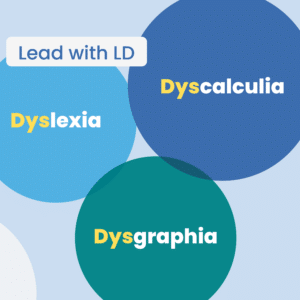All about SLDs, IEPs, and IDEA
 It’s crucial to acknowledge the unique challenges faced by students with Specific Learning Disabilities (SLDs). These challenges can impact a person’s ability to read, write, and perform mathematics for a lifetime. In this blog post, we’ll dive into what SLDs are, explore the concept of an Individualized Education Program (IEP), and shed light on the importance of the Individuals with Disabilities Education Act (IDEA).
It’s crucial to acknowledge the unique challenges faced by students with Specific Learning Disabilities (SLDs). These challenges can impact a person’s ability to read, write, and perform mathematics for a lifetime. In this blog post, we’ll dive into what SLDs are, explore the concept of an Individualized Education Program (IEP), and shed light on the importance of the Individuals with Disabilities Education Act (IDEA).
So, what are SLDs?
Specific Learning Disabilities, commonly referred to as SLDs or simply LDs, are brain-based disorders that affect an individual’s capacity to excel in certain academic areas and are one of the 13 disability categories under IDEA—more on that below. These disabilities manifest differently but predominantly affect reading, writing, and mathematical skills. Here are some of the most common—but not all— LDs:
- Dyslexia is a well-known learning disability that primarily impacts reading. People with dyslexia struggle with decoding, recognizing, and spelling words accurately. These difficulties persist despite having access to adequate instruction, making fluent reading a struggle.
- Dysgraphia is a learning disability associated with writing. Individuals with dysgraphia may make grammar mistakes, produce writing that lacks structure and clarity, and find it challenging to form letters neatly. This condition can hinder effective communication through written expression.
- Dyscalculia is a learning disability that affects an individual’s mathematical skills. It can hinder basic calculations and present challenges in solving complex math problems, such as word problems and multi-step mathematical tasks.
Understanding IEPs
Individualized Education Programs (IEPs) are pivotal in addressing the unique educational needs of students with disabilities in K-12 education, including those with SLDs. These personalized plans are carefully crafted to ensure that each student receives the necessary instruction, support, and services to thrive in an educational setting.
- An IEP is a legally binding document that describes the student’s needs and goals—including the services, specialized instruction, accommodations, or modifications that must be provided.
- A school creates an IEP for a student identified with a disability and the required specialized instruction and/or related services to meet their unique needs.
- The Individuals with Disabilities Education Act governs the provision of IEPs. This federal law mandates that eligible students receive the necessary support after a formal identification and evaluation process for one of the 13 disability categories, including a specific learning disability.
Let’s get real about IDEA
The Individuals with Disabilities Education Act (IDEA) is the law that requires schools to provide children with disabilities a free, appropriate public education in the least restrictive setting. Each part of IDEA also receives yearly funding from the federal government, but state and local governments fund the remainder.
IDEA has different parts:
- Part B and its accompanying regulations provide the legal framework for ensuring that the needs of all students with disabilities (including those with learning disabilities) ages 3-21 are met.
- Part C provides early intervention services to children with disabilities from birth through age 2.
- Part D funds competitive grants to support state personnel development, technical assistance and dissemination, technology, and parent training and information centers.
Nearly 50 years ago, Congress passed IDEA, committing to cover 40% of the extra costs per student for educating those with disabilities. Today, Congress provides only around 12% of that funding. What makes this worse is that students with specific learning disabilities make up the largest group among those served by IDEA, comprising approximately 2.45 million out of the 7.2 million children covered by the law.
In conclusion, it is critical to have an understanding of SLDs and the essential rights that students with LD with an IEP and their families have. IDEA is essential for fostering an inclusive and equitable educational environment. By recognizing the unique challenges faced by students with specific learning disabilities and ensuring they receive the tailored support they need, we can pave the way for their academic success and personal growth.
